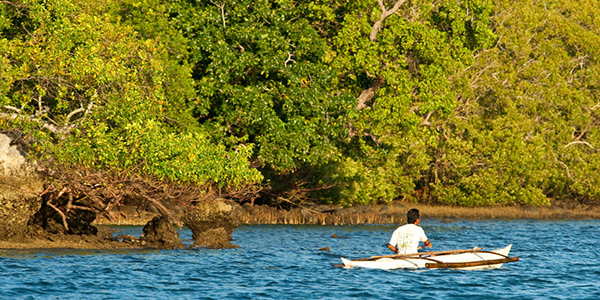 Coastal and marine habitats, particularly coral reefs and mangroves, play a crucial role in reducing the impacts of coastal erosion and inundation during storms by providing natural protection. They also benefit fisheries production, tourism, and in the case of mangroves, carbon sequestration.
Coastal and marine habitats, particularly coral reefs and mangroves, play a crucial role in reducing the impacts of coastal erosion and inundation during storms by providing natural protection. They also benefit fisheries production, tourism, and in the case of mangroves, carbon sequestration. - Insured losses from natural disasters (especially coastal and riverine hazards) reached an all-time high in 2011 and impacts will continue to worsen with continued climate change.
- Erosion, inundation and extreme weather events affect hundreds of millions of vulnerable people, important infrastructure, tourism, and trade—with significant losses to national economies and major impacts on human suffering.
- The proportion of the world’s GDP annually exposed to tropical cyclones was 4.3 percent in the first decade of the 2000s. In 1998 Hurricane Gilbert caused damages exceeding 365% of St. Lucia’s GDP, and in 2004 the losses caused by hurricane Ivan in Grenada were more than twice the nation’s GDP.
- Global losses of coastal habitats are 30-50 percent for wetlands, 19 percent loss of mangroves from 1980-2005, and around 75 percent of the world’s coral reefs are rated as threatened.
Sixty percent of the world population is expected to live in urban areas by 2030, with greater concentration around coastal areas. Climate change and coastal hazards such as storm floods add significant risks to the coastal population, infrastructure and economic assets, often concentrated in the coastal zone.
Without changes in both the policy and perception of the values of these systems, it is expected that the trends in habitat loss will continue. By recognizing and incorporating the true value of these ecosystems in national accounts, policy makers will be much more likely to consider these values in decision-making.
